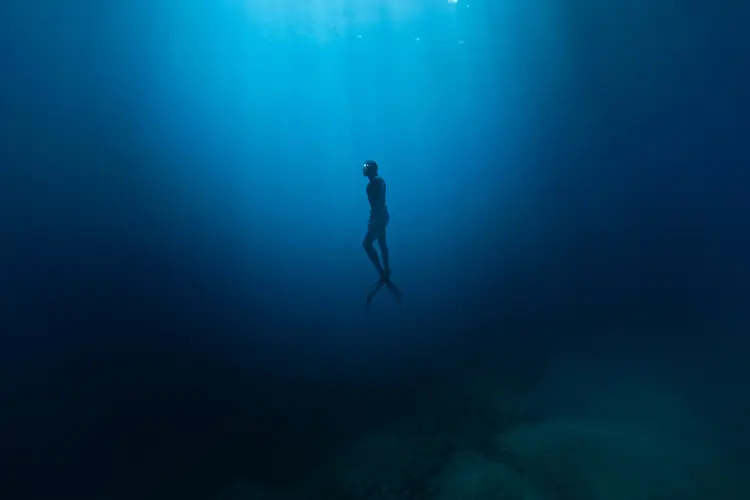
From the watery depths of Florida to Gloucester, discover more about the fascinating proposed – and fully built – undersea habitats for humans
By
For thousands of years, humans have lived on land. As our population has grown, so has the scale of our infrastructure. Towering skyscrapers are now a common feature of urban landscapes, as architects try to mediate an ever-expanding population with the reality of space constraints.
As the world population continues to boom, with projections suggesting there will be 9.8 billion of us on the planet by 2050, researchers are looking toward other, more atypical habitats for humans to live in.
One example of those is underwater habitats. In the watery depths of many oceans, innovations are underway as the first examples of undersea habitats for humans to inhabit.
From those designed with researchers and scientists in mind to others simply created with the purpose of pushing the boundaries of human habitation, there are a plethora of new and exciting projects beneath the waves.
Where exactly are they, and what are their purposes? Read on to find out…
Enjoying this article? Check out our related reads:
Proteus
Created by ocean explorer Fabien Cousteau (grandson of Jacques-Yves Cousteau), Proteus is a proposed advanced underwater research habitat, set to be completed by 2028, built to host scientists, NGOs, government bodies and businesses throughout prolonged ocean research and marine conservation.
The proposed layout is a two-story circular structure, covering around 4,000 sq ft, suspended on stilts around 20 metres below the ocean surface, incorporating several detachable pod modules. These modules are able to house labs, bedrooms, media suites and a large pool.
Up to 12 aquanauts can stay on Proteus for missions lasting up to 30 days. Goals for research onboard include investigating coral health, plastic pollution, biodiversity and marine genetics.
When fully developed, Proteus would run fully on renewable energy, such as solar, wind and ocean thermal energy conversion.
Sentinel
Another deep-sea habitat in construction is that of Sentinel, designed to support long-duration human residence, with teams able to live at depths of up to 200 metres for 28 days or more.
The project is anchored on a flooded limestone quarry in Chepstow, Gloucestershire, and is expected to be fully completed by 2027.
Sentinel is being constructed using robotic metal 3D printing, a robust method that ensures the infrastructure can withstand the strong pressure at such depths.
Each module of Sentinel is around six metres in diameter, and can house up to six crew members with bedrooms and bathrooms alongside a communal kitchen, workspace and even entertainment facilities like TVs.
The entire habitat will run off a micro-grid, supporting a mixture of renewables like solar and wind, alongside ocean thermal energy. Any communications to Sentinel will be handled via satellite buoys.
The project is of vital importance for researchers to access the epipelagic zone of the ocean, home to more than 90 per cent of marine life. This zone is far beyond the reach of short human dives from surface vessels. In addition, Sentinel offers the chance for researchers to conduct continuous, on-site monitoring without the need to return to the surface.
Aquarius Reef Base
Located around 5.4 nautical miles off the coast of Key Largo in Florida is an underwater science laboratory that rests around 18 metres (60ft) below the ocean surface.
Built back in the 1990s, Aquarius Reef Base still remains the only undersea habitat operating today. Since 2013, it has been operated by Florida International University, and typically hosts a crew of four scientists and two technicians for missions around ten days in length.
Divers onboard are able to continuously dive for up to nine hours per day, enabling a richer breadth of scientific work to be carried out.
Research onboard ranges from coral disease studies to nutrient cycling and pharmacological research. However, other sectors have become interested in its location, most notably NASA. The company utilises Aquarius as a training ground and laboratory for astronauts preparing for spacewalks and lunar missions.
Vanguard
Vanguard is a prototype underwater habitat created by DEEP, designed as the precursor to their larger Sentinel system.
Compact yet sturdy, Vanguard is built to house three individuals for up to seven days at a depth of around 100 metres. Roughly the size of a shipping container, Vanguard can be easily deployed into a multitude of oceanic locations.
Much like Sentinel, the habitat is constructed using a robotic 3D printing method, allowing the infrastructure to withstand the high pressures of such an environment.
Vanguard is able to draw energy via cable from shore-based renewables, floating energy farms or underwater battery systems. As well as this, the habitat has 96 hours of emergency energy backup.
Trials of Vanguard began in the Scottish Highlands in mid-2025, which were successful and confirmed the habitat’s structural integrity.
Alpha Deep SeaPod
Part of a floating living ecosystem that combines an overwater habitat with a submerged capsule around 11 metres below the Caribbean Sea, the SeaPod was created with an ambition to show how sustainable, long-duration life can be lived under the sea.
Last year, German aerospace engineer Rüdiger Koch broke records after staying in the pod for 120 days, marking the longest ever stay in a fixed underwater habitat.
Inside the pod, a small bed, desk, TV, computer, exercise bike and fans can be found, alongside a portable toilet and sink. With no shower onboard, any occupants must improvise with sponge baths.
The exterior of the capsule forms an artificial reef, attracting barnacles, coral and fish. In turn, this helps to enhance local marine biodiversity.



